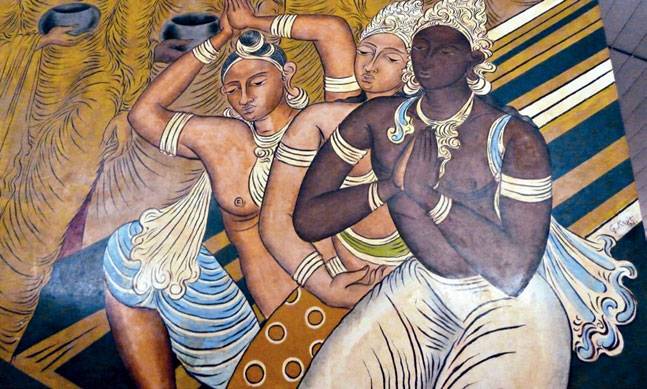George Keyt
This is a collection of articles archived for the excellence of their content. |
George Keyt
Latika Gupta , Sri Lankan Treasure “India Today” 10/4/2017
The rebellion of the Bombay Progressives against the academic style of painting taught in the colonial art schools set up by the British, and the traditionalism of the Bengal School, is well known for having produced spectacular artists like M.F. Husain and S.H. Raza. The work of Sri Lanka's most renowned artist, George Keyt (1901-1993), stands apart from both these models, as Yashodhara Dalmia makes clear in her new monograph on the intriguing modernist painter.
Often called Sri Lanka's Picasso, Keyt was a member of the '43 Group that was at the forefront of the development of a Sri Lankan modernism. Blending Western Cubism (and post-Impressionism in the early years) with mythological subjects like the love of Krishna and Radha and the life of Gautama Buddha, Keyt's work marked Sri Lankan artists' search for a new, modernist outlook and idiom. Dalmia-an art historian, critic, and curator who has written significant books on the Bombay Progressives and contemporary Indian art-spent several years piecing the story together, interviewing Keyt's contemporaries, tracing his correspondence and tracking down paintings by him and his peers.
In the process, she reconstructed the early decades of art in Sri Lanka and its connection to Europe, and has written the definitive biography of Keyt, both through his personal life and his long career. Its jargon-free text will be as accessible to the lay reader as to a scholar of cultural studies. Dalmia's primary research brings to light delightful anecdotes from Keyt's romantic and professional relationships-including his meetings with Chilean poet Pablo Neruda and his long friendship with Martin Russell, the British investment banker who was the chief patron of the '43 Group.
The most nagging flaw? Unfortunately, the book has too few illustrations in colour, and even those are poorly printed.
Though Keyt continues to tower over art education in his home country even today, as Sri Lankan artist Anoli Perera noted at the book's launch in Delhi on March 23, he may be more easily accepted as a national icon because his work is not politically challenging and stayed rooted in a pleasing aesthetics. ???
-Latika Gupta
